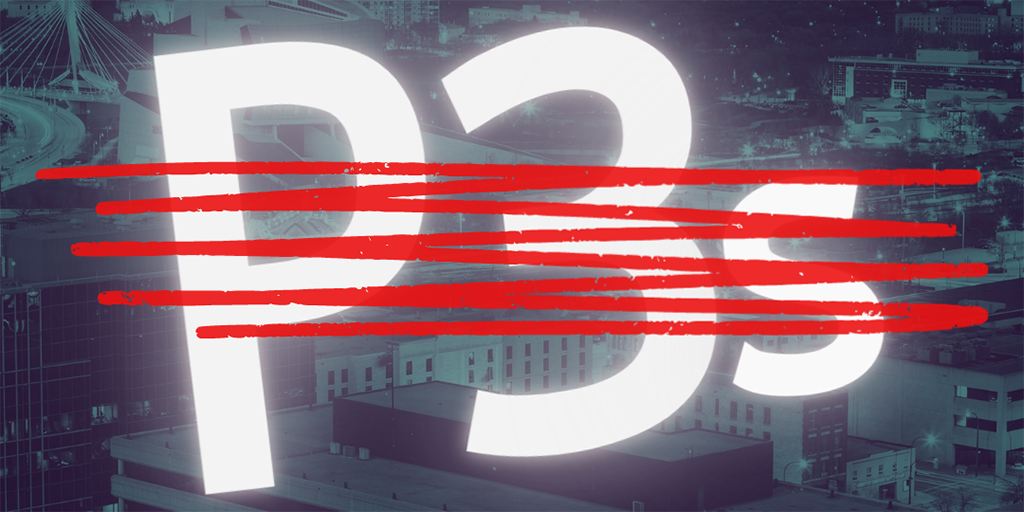
By Saku Pinta
First published in the Winnipeg Free Press Friday June 18, 2021
When the province of Manitoba ordered the City of Winnipeg to undertake a market assessment of P3s for the sewage treatment system – including the estimated $1.8 billion to replace the North End sewage treatment plant – they didn’t mean pee, poop, and paper. But the idea still stinks.
P3s are public-private partnerships, a controversial partnership model between governments and the private sector to design, build, and maintain public infrastructure and/or to deliver services, with contracts that often last 30 years or more.
The fact that the $400,000 contract for this sewage treatment system market assessment – awarded to multinational professional services firm Deloitte – was not open to a competitive bidding process is a fitting reminder of the overwhelming evidence that P3s not only reduce accountability and public oversight, but are more costly and present more risks to governments.
P3s are in fact one of the main pillars of neoliberal privatization. The application of market principles to the public sector through P3s has been shown time and again to be more costly than publicly financed and operated projects with financial and contract details hidden from public view and scrutiny. Afterall, for-profit corporations are accountable to their shareholders and not the public who rely on critical infrastructure like wastewater treatment. Moreover, the preference of for-profit operators for outsourced, low-wage jobs – with minimal staffing levels to maximize return on investment – can and often do lead to a decline in service, among other problems.
In Winnipeg, the construction of the Charleswood Bridge, completed in 1995, using a build-operate-own-transfer P3 model served as an important, and expensive, lesson. As the late University of Manitoba economist John Loxley revealed — following a difficult process of obtaining contracts and other information about the deal — Winnipeg taxpayers got locked in to an 11% yearly interest rate, significantly higher than the market rate.
It hardly comes as a surprise then that P3s have begun to fall out of favour with governments in Canada.
The City of Winnipeg has already moved away from a P3 model with both the South District Police Station in 2013 and the construction of four new fire stations around the same time period. Due to the low-interest environment then – similar to the current, record-low borrowing rates set by the Bank of Canada – the City of Winnipeg is set to save $9.7 million over 30 years.
In Ontario, the Auditor General Bonnie Lysyk consistently has criticised P3s in her annual reports, highlighting the increased costs associated with private financing, conflicts over maintenance contracts, and the flimsy evidence used to justify them. In 2015, she estimated that P3s cost the province a total of $8 billion more than if they had been publicly financed and operated.
The ballooning costs associated with P3s have been exposed in other Canadian jurisdictions as well, above all in transportation infrastructure. In British Columbia, an independent analysis of the Sea-to-Sky highway project published in 2005 demonstrated that the adoption of a P3 model left taxpayers on the hook for an additional $220 million over a 25 year period. It was found that the report that justified the use of this model for the highway project exaggerated both the costs of the public option and the savings from the P3. A similar independent study on the construction of Cobequid Pass Toll Highway in Nova Scotia published in 2019 revealed that this project cost $232 million more to build, finance, operate, and maintain as a P3.
Yet the current Manitoba government continues its ideologically-driven pursuit of P3s. This predisposition to privatization was perhaps most clearly apparent with the repeal of the P3 Transparency and Accountability Act in 2017, legislation designed to provide minimal provisions for public oversight and a fair review process of P3s.
Ironically, Premier Brian Pallister provided some of the best advice on P3s during a keynote speech that he delivered at the Deloitte-sponsored Canadian Council for Public-Private Partnerships conference, held in Winnipeg in May 2017. Using a sports analogy, Premier Pallister observed that “Losses are better teachers often than wins. Often you learn more about yourself and your teammates when you’re challenged than you do in good times.” He then used the occasion to announce to the assembled lobbyists in the audience that the province would be considering a P3 model to build four new schools in Manitoba.
The result? One year later the province reversed a decision to use a P3s in favour of the traditional procurement process. A value-for-money analysis revealed that in doing so the province saved $18 million, enough to build an additional school. Surely, if Premier Pallister takes his own advice, there are important lessons to draw from this evidence-based challenge that ultimately defeated the use of P3s to build new schools, just as the overwhelming evidence of the high cost of these arrangements to taxpayers can serve as a good cautionary tale.
It’s time that we flush P3s now instead of watching more public money go down the drain.
Dr. Saku Pinta is the Errol Black Chair in Labour Issues at the Canadian Centre for Policy Alternatives – Manitoba


